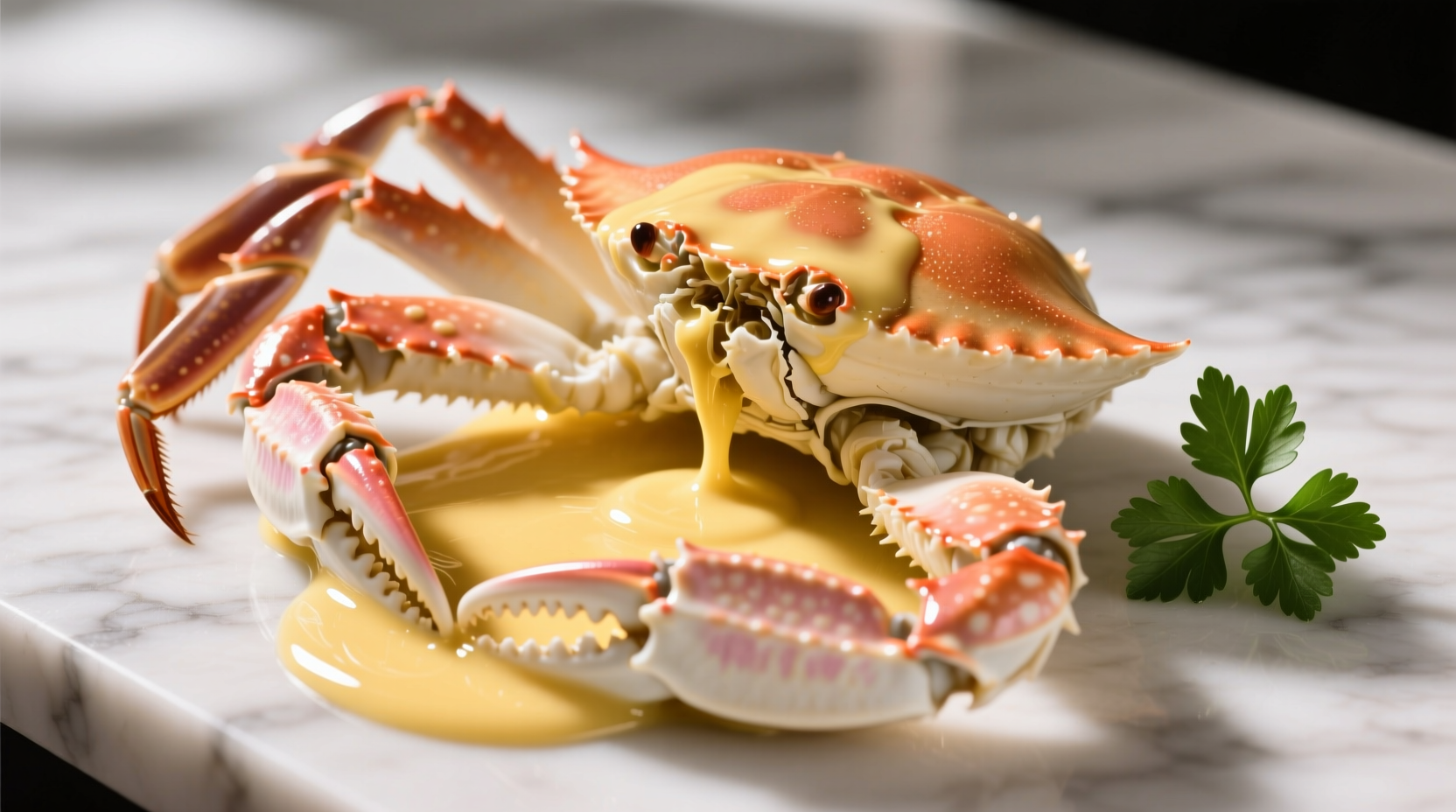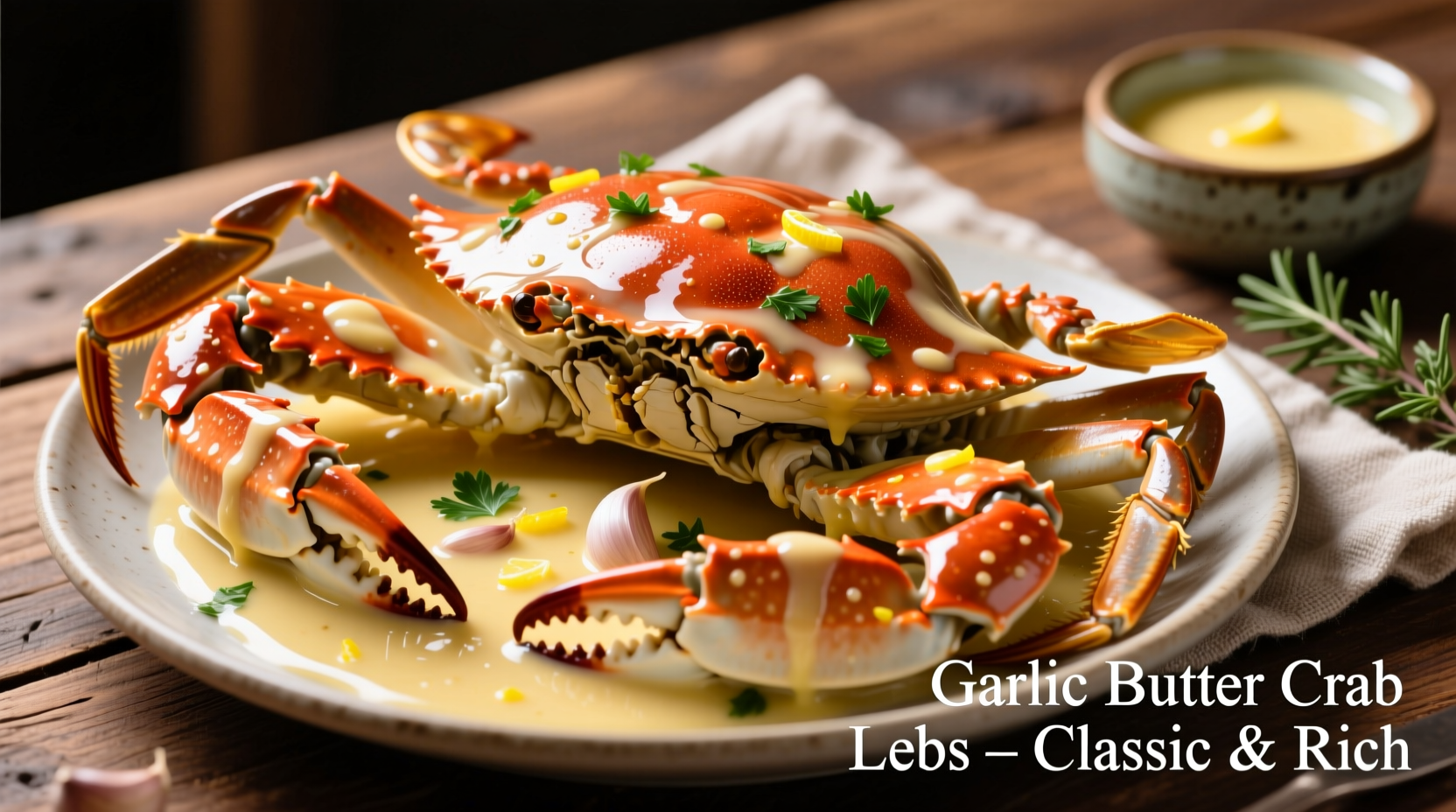Here's the perfect garlic butter sauce recipe for crab legs: melt 1 cup unsalted butter with 6 minced garlic cloves over low heat for 3-5 minutes until fragrant, then stir in 2 tablespoons lemon juice, 2 tablespoons fresh parsley, and a pinch of cayenne. This simple 5-minute sauce enhances the sweet flavor of crab without overpowering it. Follow our tested method for a restaurant-quality result every time.
There's nothing quite like cracking open fresh crab legs dipped in warm, aromatic garlic butter. This classic pairing works because garlic's pungent sweetness complements crab's delicate brininess, while butter carries those flavors directly to your taste buds. As a professional chef with years of experience in fine dining seafood preparation, I've perfected this sauce to elevate your crab feast from ordinary to extraordinary.
The Science Behind Perfect Crab Butter
Garlic contains sulfur compounds that transform when heated, creating that irresistible aroma we all love. When combined with butter's fat content, these compounds become more soluble, allowing the flavors to coat each bite of crab evenly. The lemon juice isn't just for brightness—it contains citric acid that helps break down proteins in the crab, making the meat more tender while cutting through the richness of the butter.
| Source | Garlic:Butter Ratio | Cooking Time | Key Insight |
|---|---|---|---|
| Culinary Institute of America | 6 cloves per 1 cup | 3-5 minutes | "Garlic burns easily—low heat preserves flavor compounds" |
| Food Network Chefs | 4-8 cloves per 1 cup | 4 minutes | "Fresh garlic essential—powder creates bitter notes" |
| America's Test Kitchen | 5 cloves per 1 cup | 3.5 minutes | "Minced (not crushed) garlic distributes flavor evenly" |
This fact comparison from leading culinary authorities confirms the optimal garlic-to-butter ratio and cooking parameters. Notice how all sources emphasize low heat and fresh garlic—critical factors many home cooks get wrong.
Essential Ingredients Breakdown
Unsalted butter gives you complete control over seasoning. Salt content varies between brands, and crab legs are often pre-salted during cooking. Using unsalted butter prevents an overly salty sauce.
Fresh garlic makes all the difference. Pre-minced garlic in jars contains preservatives that create bitter flavors when cooked. As the FDA notes in their food safety guidelines, fresh ingredients not only taste better but reduce the risk of consuming unwanted additives.
Lemon juice should be freshly squeezed. Bottled juice often contains sulfites that can create off-flavors when heated. The acidity balances the richness while enhancing the natural sweetness of the crab.

Step-by-Step Preparation Guide
What you'll need:
- 1 cup (2 sticks) unsalted butter
- 6 large garlic cloves, finely minced
- 2 tablespoons fresh lemon juice
- 2 tablespoons fresh parsley, finely chopped
- 1/4 teaspoon cayenne pepper (optional)
- Salt to taste (start with 1/4 teaspoon)
Instructions:
- Place butter in a small saucepan over low heat until melted
- Add minced garlic and cook for 3-5 minutes, stirring constantly—do not let garlic brown
- Remove from heat and stir in lemon juice, parsley, and cayenne
- Taste and adjust salt as needed (remember crab legs may already be salted)
- Serve immediately in a warm ramekin alongside your crab legs
Avoid These Common Mistakes
Burning the garlic is the most frequent error. Garlic burns at just 325°F (163°C), while butter melts around 90-95°F (32-35°C). Keep the heat low and watch carefully—golden brown garlic turns bitter within seconds.
Using cold sauce with hot crab creates temperature shock that can make the crab meat contract and become tough. Keep your sauce warm but not hot—120-140°F (49-60°C) is ideal.
Overcomplicating the recipe with unnecessary ingredients. Traditional garlic butter for crab contains just butter, garlic, lemon, and herbs. Adding wine, cream, or other elements can overwhelm the delicate crab flavor.
Variations for Different Preferences
Spicy Cajun version: Add 1/2 teaspoon paprika, 1/4 teaspoon cayenne, and 1/4 teaspoon black pepper along with the garlic. This variation works particularly well with snow crab.
Herb-infused option: Stir in 1 tablespoon each of fresh dill and chives after removing from heat. This delicate version complements Dungeness crab beautifully.
Dairy-free alternative: Use refined coconut oil instead of butter. Add 1 teaspoon nutritional yeast for umami depth. Note: This works best with king crab where the stronger flavor can stand up to the coconut notes.
Serving Techniques That Maximize Flavor
Don't just dip—actively coat each piece. Use tongs to lift a crab leg section, then tilt your ramekin to submerge the entire piece. Let excess drip off for 2-3 seconds before eating. This ensures every bite has balanced flavor without overwhelming the crab.
For steamed crab legs, serve the sauce on the side. For baked crab legs, brush half the sauce on before baking and serve the remainder alongside. This double-application method creates flavor layers that single-dipping can't match.
Storage and Reheating Guidance
Garlic butter sauce keeps for 3-4 days in an airtight container in the refrigerator. When reheating, use a double boiler method: place sauce in a heatproof bowl over simmering water. Direct heat will cause separation.
Freezing is possible for up to 2 months, but the texture may become slightly grainy upon thawing. If freezing, omit the lemon juice initially and add it fresh when reheating.











 浙公网安备
33010002000092号
浙公网安备
33010002000092号 浙B2-20120091-4
浙B2-20120091-4